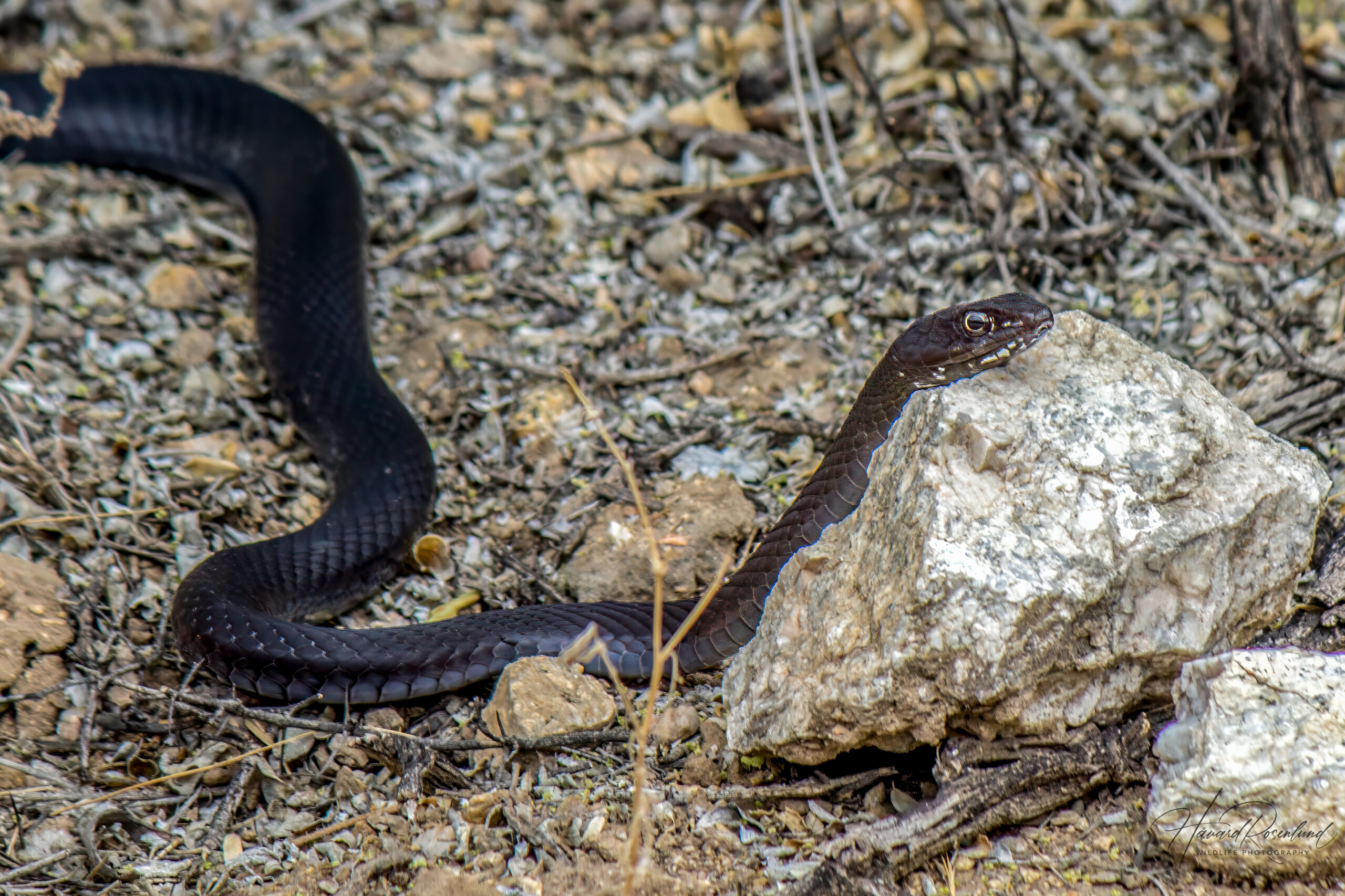Description
The coachwhip (Masticophis flagellum) is a species of non-venomous snake native to the United States and northern Mexico. Coachwhips are characterized by their long, slender bodies, which can reach lengths of up to 2.4 m (8 feet), making them one of the longest native snakes in the United States. Physically, they are notable for their smooth scales and a coloration that varies significantly across their range, often providing excellent camouflage in their natural habitats. Colors can range from black, brown, tan, to pinkish, often with a gradient effect. The head is usually darker than the rest of the body, and they have large eyes with round pupils. Unlike many other snakes, coachwhips are known for their speed and agility (even outpacing humans), as well as their curious nature. Coachwhips differ from similar species in their elongated, whip-like appearance and distinct color patterns. They are often confused with rat snakes but can be distinguished by their more slender build and faster movements.
Diet & habitat
Coachwhips are found in a variety of habitats, including deserts, prairies, scrublands, and open woodlands. They are highly adaptable and can also be found in agricultural areas and near human habitation. As carnivorous reptiles, coachwhips have a diverse diet, feeding on a range of prey including rodents, lizards, birds, and insects. They are known for their unique hunting style, where they actively pursue and sometimes even climb to chase their prey. These snakes have been observed using their speed and agility to quickly overtake their prey, often swallowing it whole.
Reproduction
The breeding season for coachwhips typically occurs in spring. During this time, males may engage in combative displays for the right to mate with a female. Females lay eggs in the summer, usually in hidden, safe locations like under rocks or in burrows. The clutch size varies but typically includes around 6 to 24 eggs. Incubation lasts for about two to three months, depending on temperature and other environmental factors. The hatchlings are independent from birth and receive no parental care. They are born fully formed, resembling miniature versions of adult snakes.
Status
The coachwhip is currently not facing any significant threats to its population. However, like many wildlife species, it is affected by habitat loss due to human activities. There are no major concerns regarding its conservation status at this time, but ongoing monitoring of its habitat and population trends is essential. It is listed as least concern on the IUCN Red list.







